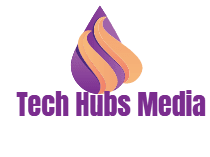A new paradigm called the Internet of Things (IoT) has transformed traditional living into a high-tech lifestyle. These changes brought about by IoT include smart cities, smart homes, pollution control, energy conservation, smart transportation, and smart industries. Many important research projects and investigations have been carried out to advance technology through IoT. To fully realize the potential of IoT, there are still numerous obstacles and problems that We must resolve. We must consider these difficulties and problems from various IoT perspectives, including applications, difficulties, enabling technologies, social and environmental impacts, etc.
This article’s main objective is to discuss the IoT’s difficulties, key concerns, architecture, and important application domains. We’ll discuss topics like how IoT and sensor technology are useful in today’s world and why the IoT ecosystem is promising for enterprise growth.
What exactly is the Internet of Things?
The Internet of Things (IoT) is a new paradigm that makes it possible for electronic devices and sensors to communicate with one another over the internet to make our lives easier. Smart devices and the internet are used by the Internet of Things (IoT) to offer creative answers to problems faced by the business, governmental, and public/private sectors worldwide. IoT is steadily growing in importance and is now pervasive throughout our daily lives. It could be used as a pre-work before creating novel, inventive business plans while considering security, assurance, and interoperability. IoT, as a whole, is a technological advancement that combines a wide range of smart systems, frameworks, intelligent devices, and sensors. Additionally, it uses quantum and nanotechnology to achieve previously unthinkable levels of storage, sensing, and processing speed.
How are IoT and sensor technology useful in today's world?
The devices that make up the Internet of Things (IoT) must be able to communicate with one another and collect the data that The devices that make up the Internet of Things (IoT) will share for it to function. This is why sensors are employed to achieve this for a broad range of objectives. Sensors are generally tools that detect and respond to environmental changes, which can be brought on by various things, including light, motion, pressure, and temperature. Depending on a particular sensor and its intended use, Depending on the particular sensor and its intended use can collect a variety of data.
IoT sensor-enabled enterprise app development tools are widely used and increasingly important for modern businesses due to the variety of inputs. One of its most significant benefits is that it can begin analytical processes that warn you of potential issues. Businesses can perform maintenance audits and lower risk.
Let's look at how IoT and sensors help businesses in the expanding world:
● Agriculture: IoT-based agricultural sensors offer several advantages and are used to ensure that every aspect of your operation is managed, tracked, and under control. Farm equipment tracking devices, livestock tracking with real-time updates, soil moisture and conditions, water sensors to monitor water levels and usage in tanks, and temperature checks with real-time alerts are just a few of the features offered by IoT integrated applications with sensors for agriculture.
● Air Quality Sensors: IoT air quality sensors function with more seasoned air quality monitoring tools to collect more comprehensive data in bulk. These sensors monitor temperature, humidity, altitude, air pressure, CO2 levels, and pollution levels. Cities can pinpoint the cause of their emissions problems and create tactical ways to reduce the quantity with the help of accurate air pollution predictions.
● Drones: IoT-enabled drones can perform many critical tasks, particularly when doing so would be risky, impractical, or expensive for humans. For example, drone technology to carry things from nearby distribution hubs or warehouses to a specified address increases last-mile delivery. Furthermore, IoT-powered UAVs and drones for animal conservation offer numerous characteristics, such as GPS for location tracking, fertilizers and cameras, and video for recording and monitoring.
● Smart Infrastructure: IoT is crucial for cities' environment for active growth. Towns must implement IoT solutions and purchase electric vehicles to cut carbon emissions and create a safe and healthy environment.
● Waste management: Waste management systems help to increase collection efficiency, decrease operational costs, and handle environmental issues more effectively. The garbage can has a level sensor as part of IoT solutions from data science consultancy companies. The message appears to be emptying a full container.
Why is the IoT ecosystem so promising for enterprise growth?
● Opens the door to potential new sources of income: IoT solutions from mobile app development services will continue to gain consumer momentum with a focus on smart buildings, automotive telemetry, and industrial automation, creating opportunities to sell new products that weren't previously necessary. These IoT products will also enable many businesses to create new income sources.
● Enhanced effectiveness: The IoT ecosystem enables businesses to streamline and automate processes, boosting their effectiveness and increasing employee productivity. As a result, it is possible to accomplish more in less time while reducing the possibility of human error by using fewer resources, more automated processes, and quicker turnaround times.
● New business strategies: The Internet of Things generates new business strategies through automation and new service offerings. With the inclusion of the IoT ecosystem, enterprise operations are improving.
● Improved business insights and customer experience: The IoT ecosystem handled by big data analytics service providers operates so quickly that businesses can collect real-time data insights and analytics in less time. These can then be used to improve business operations, product and service offerings, and, eventually, the customer experience.
Conclusion
We anticipate that more businesses
will implement an IoT strategy to meet the growing demand for innovative
products and services in the coming years. Enterprises seeking to gain
competitive advantage can use the best IoT services to obtain the best solutions.











.jpg)


0 Comments